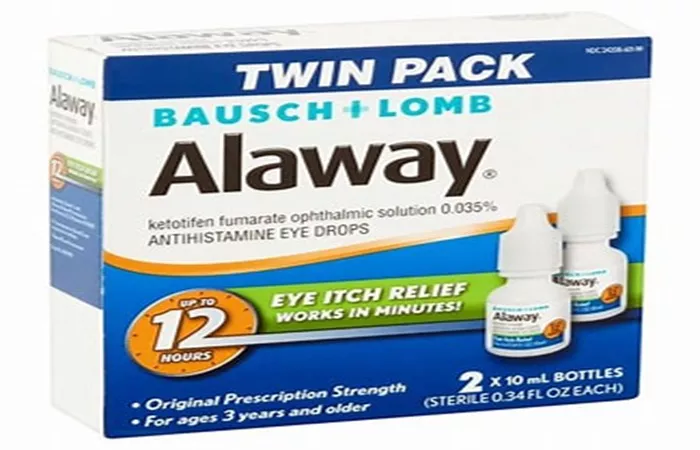Eye allergies, or allergic conjunctivitis, cause redness, itching, swelling, and tearing due to allergens like pollen, dust, or pet dander. Effective allergy eye drops can relieve these symptoms. This article explores the best options, how they work, and key considerations.
Understanding Eye Allergies
Eye allergies occur when the immune system overreacts to harmless substances, releasing histamine and causing inflammation. Common allergens include pollen, dust mites, pet dander, mold, smoke, and cosmetics. Symptoms include redness, itching, swelling, tearing, burning, and light sensitivity.
Types of Allergy Eye Drops
- Antihistamine Eye Drops: Block histamine to relieve itching and redness.
- Mast Cell Stabilizers: Prevent histamine release.
- Combination Drops: Offer immediate relief and long-term prevention.
- Decongestant Eye Drops: Reduce redness by constricting blood vessels.
- Corticosteroid Eye Drops: Reduce inflammation for severe allergies.
- Lubricating Eye Drops: Soothe irritation and wash away allergens.
The Most 6 Effective Allergy Eye Drops
Antihistamine Eye Drops
- Examples: Ketotifen (Zaditor), Olopatadine (Patanol), Emedastine (Emadine).
- Effectiveness: Quick relief for mild to moderate symptoms.
- Side Effects: Temporary stinging, headache, or dry eyes.
Mast Cell Stabilizers
- Examples: Cromolyn Sodium (Crolom), Nedocromil (Alocril).
- Effectiveness: Best for preventing symptoms, especially seasonal allergies.
- Side Effects: Temporary stinging or dry eyes.
Combination Drops
- Examples: Olopatadine (Patanol), Azelastine (Optivar), Ketotifen (Zaditor).
- Effectiveness: Immediate relief and long-term prevention for moderate to severe symptoms.
- Side Effects: Temporary stinging or dry eyes.
Decongestant Eye Drops
- Examples: Naphazoline (Clear Eyes), Tetrahydrozoline (Visine).
- Effectiveness: Reduces redness but not itching or swelling.
- Side Effects: Rebound redness with overuse.
Corticosteroid Eye Drops
- Examples: Loteprednol (Alrex), Prednisolone (Pred Forte).
- Effectiveness: Highly effective for severe symptoms but with risks.
- Side Effects: Increased eye pressure, cataracts, or blurred vision.
Lubricating Eye Drops
- Examples: Systane, Refresh Tears.
- Effectiveness: Soothes mild symptoms or complements other treatments.
- Side Effects: Temporary stinging or blurred vision.
Choosing the Right Eye Drops
Symptom Severity: Mild symptoms may need OTC antihistamines or lubricating drops; severe symptoms may require prescription corticosteroids.
Consultation: An eye care professional can recommend the best treatment.
Risks and Benefits: Consider side effects, especially with long-term use.
Lifestyle Changes to Manage Eye Allergies
Avoid Allergens: Keep windows closed, use air purifiers, and wash bedding regularly.
Wear Sunglasses: Protect eyes from allergens outdoors.
Use Cold Compresses: Reduce swelling and soothe irritation.
Stay Hydrated: Keep eyes moist and reduce dryness.
Manage Stress: Stress can worsen symptoms; practice relaxation techniques.
Conclusion
The most effective allergy eye drops—antihistamines, mast cell stabilizers, combination drops, and corticosteroids—offer relief for varying symptom severity. However, the best treatment depends on individual needs and should be guided by an eye care professional. Combining eye drops with lifestyle changes and allergen avoidance can significantly improve quality of life for those with eye allergies. Managing eye allergies is a long-term commitment, but with the right approach, it is possible to live comfortably and symptom-free.
Relative topics:
Yogurt Allergy: Causes, Symptoms, Treatment & More
Zinc for Allergies: Is It Effective?
7 Best At-Home Allergy Tests for Quick, Reliable Results

